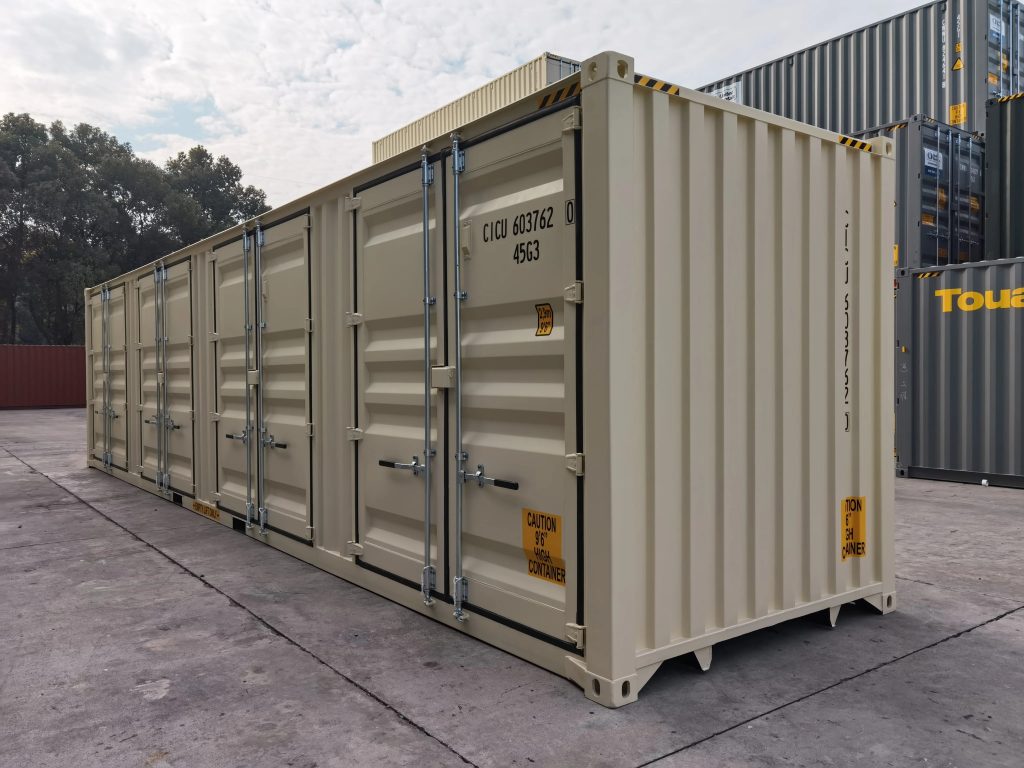5 Killer Quora Answers On Freight Containers
Understanding Freight Containers: The Backbone of Global Trade
In the modern world of logistics and transportation, freight containers act as the unrecognized heroes that help with the smooth movement of goods across borders. Set up on ships, trucks, and trains, they play a critical role in the worldwide economy, guaranteeing that items from various corners of the Earth assemble in markets to fulfill consumer needs. This article will dive deep into the intricacies of freight containers, their types, applications, benefits, and future prospects.
What Are Freight Containers?
Freight containers, likewise understood as shipping containers, are standardized, recyclable vessels for carrying goods and materials. Constructed mostly from steel and aluminum, these containers are created to endure extreme environmental conditions while guaranteeing the security and security of their contents. Their standardization has actually changed the shipping market, helping with intermodal transport— moving containers perfectly from ships to trucks to trains without discharging the goods.
Kinds Of Freight Containers
Freight containers been available in different shapes and sizes, each tailored to meet specific shipping requirements. Below is an extensive table summarizing the most typical kinds of freight containers:
Container Type
Dimensions (Length x Width x Height)
Capacity
Use
Standard Dry Box
20' x 8' x 8.5' & & 40' x 8'
x 8.5' 28-60 cubic meters
General cargo, non-perishable products
High Cube Container
40' x 8' x 9.5'
67 cubic meters
Bigger cargo, including some disposable products
Refrigerated Container
20' x 8' x 8.5' & & 40' x 8'
x 8.5' 28-60 cubic meters
Perishable goods, pharmaceuticals
Open Top Container
20' x 8' x 8.5' & & 40' x 8'
x 8.5'28-60 cubic meters
Heavy or high cargo like equipment
Flat Rack Container
20' & & 40'
20-40 cubic meters
Heavy loads, steel, and equipment
Tank Container
20'
26,000 liters
Liquid cargo like chemicals and food products
The Role of Freight Containers in Global Trade
Freight containers have actually considerably transformed worldwide trade. Their standardization permits numerous shipping and transport modes to team up without dealing with compatibility problems. Some crucial functions freight containers play consist of:
- Efficient Transportation: Containers enable the efficient loading, dumping, and transfer of products across numerous transport modes, lessening time invested in transit.
- Cost-Efficiency: Their consistent size makes it possible for efficient use of space, resulting in lower shipping costs. Shipping companies can transport more items in each journey, reducing general shipping expenses.
- Security: Containers provide a safe and secure environment for goods, lessening the danger of theft or damage during transit. Their sealed design avoids tampering.
- Ecologically Friendly: By optimizing transport paths and logistics, containers contribute to decrease carbon emissions, making freight transport more sustainable.
The Impact of Technology on Freight Containers
As technology continues to develop, so too does the landscape of freight containers. Here are a number of technological developments affecting their usage:
- IoT Integration: The Internet of Things (IoT) is changing freight tracking. IoT-enabled containers can offer real-time tracking info and environmental data (such as temperature and humidity) for delicate cargo.
- Blockchain: This technology provides protected, tamper-proof records of transactions and ownership, enhancing transparency in the supply chain and potentially decreasing scams.
- Automation and AI: Automation in storage facilities and ports accelerate the processing of containers, while AI evaluates shipping patterns to enhance performance.
Challenges in Freight Container Shipping
In spite of their lots of benefits, freight containers deal with a number of challenges that industry stakeholders need to deal with:
- Port Congestion: Increased shipping traffic can lead to congestion at ports, postponing the discharging and transport of containers.
- Regulatory Issues: Compliance with various worldwide shipping laws and policies can be made complex and might impede efficiency.
- Risk of Damage: While containers are robust, they can still sustain damage from rough handling, negative weather condition, or improper stacking.
FAQ about Freight Containers
1. What Portable Storage Containers are freight containers made from?Freight containers are mainly made from steel and aluminum, which supply sturdiness and resistance to ecological aspects.
2. How are containers transferred?Containers can be transferred by ships, trucks, and trains, enabling intermodal shipping without needing to discharge cargo.
3. What is the difference between a dry container and a refrigerated container?A dry container is used for non-perishable items, while a refrigerated container (likewise called a reefer) preserves particular temperature levels for perishable products.
4. How does containerization affect shipping expenses?Containerization increases shipping performance by taking full advantage of space and decreasing loading/unloading times, which translates to decrease per-unit shipping expenses.
5. Can freight containers be modified for specific uses?Yes, freight containers can be modified for different purposes, including mobile offices, storage systems, and even homes.
Freight containers are essential to the worldwide trade community, offering a dependable, effective, and protected method for transporting items throughout huge ranges. Their effect can be felt across different markets, from farming to innovation, and their continued advancement assures to enhance logistics further. While obstacles continue, improvements in innovation and an ever-increasing demand for items will guarantee that freight containers stay at the leading edge of modern-day commerce.
In conclusion, understanding freight containers is crucial for anyone took part in worldwide trade or logistics, as they are the foundation of an interconnected global economy.
